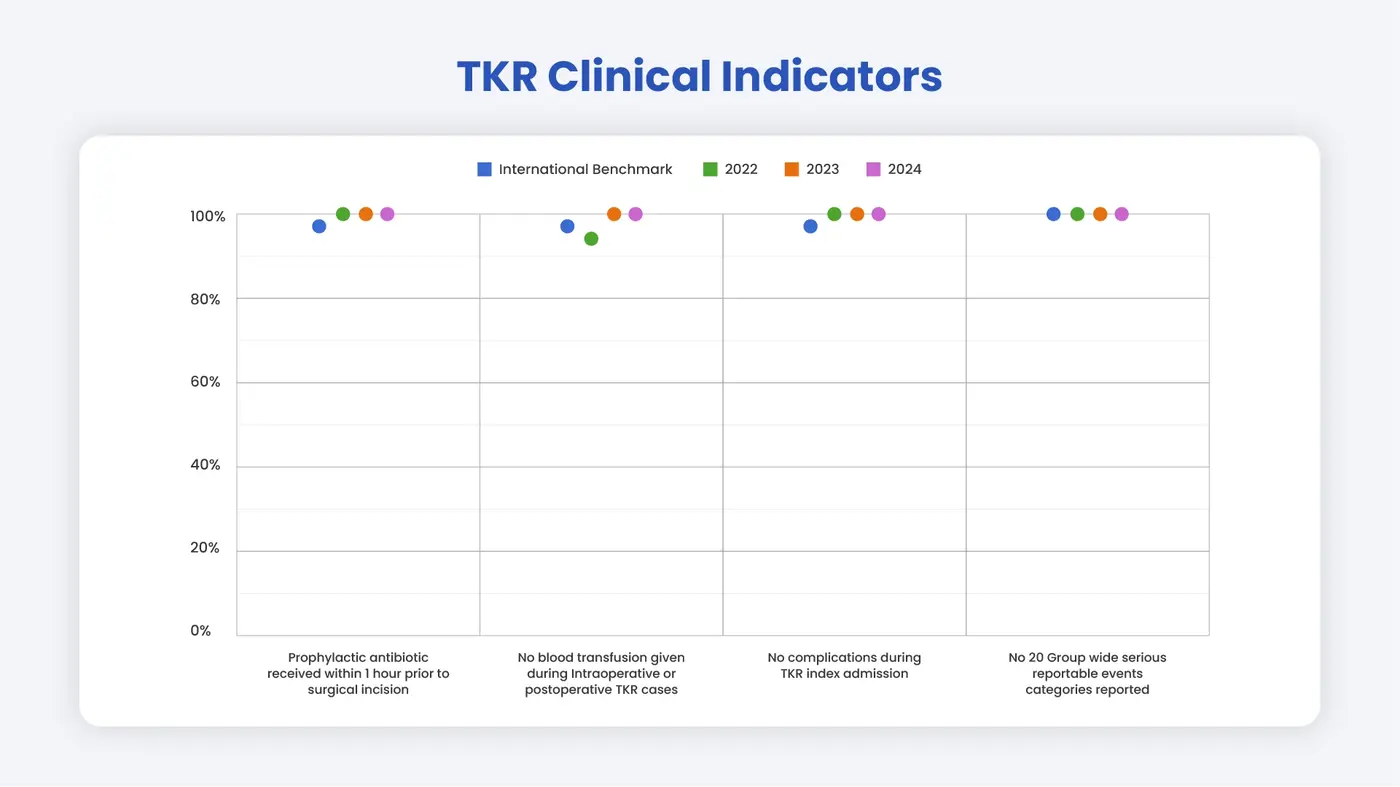What is Total Knee Replacement (TKR)?
Total Knee Replacement (TKR) is a surgical procedure where a damaged knee joint is replaced with an artificial joint (prosthesis). This procedure helps relieve arthritis-related knee pain, restore mobility, and improve overall quality of life.
Why Apply VDO Framework to TKR?
At Pantai Hospital Kuala Lumpur (PHKL), we apply the Value-Driven Outcomes (VDO) framework to ensure that TKR procedures deliver better patient outcomes, cost efficiency, and consistent quality.
By tracking key indicators like pain relief, mobility improvement, and complication rates, VDO helps:
- ✅ Optimize resource use and reduce unnecessary costs
- ✅ Improve surgical techniques through data-driven decisions
- ✅ Align TKR performance with international benchmarks
- ✅ Enhance patient trust by demonstrating measurable improvements in care
With VDO, our goal is to make TKR safer, more effective, and cost-efficient for our patients.
Value-Based Health Care Benefits
To ensure the highest standard of care, PHKL monitors the following key clinical indicators:
1️. Timely Prophylactic Antibiotics
✔ Patients receive antibiotics within 1 hour before surgery to lower the risk of
infection.
✔ Proper infection control helps prevent septic arthritis, which can slow down recovery
and limit mobility.
2️. Minimizing Blood Transfusion
✔ Avoiding intraoperative or postoperative blood transfusions reduces
complications.
✔ Managing blood loss effectively leads to faster recovery and better surgical
outcomes.
3️. Preventing Surgical Complications
✔ Careful patient selection, pre-operative optimization, and precise surgical
techniques help reduce complications.
✔ Monitoring and reporting complications improves healthcare quality and safety.
4️. Zero Serious Reportable Events (SREs)
✔ We continuously monitor and review serious reportable events to identify areas for
improvement.
✔ By learning from past cases, we enhance patient safety and surgical excellence.
How does Pantai Hospital Kuala Lumpur compare to international benchmarks?






.webp?sfvrsn=20763f7d_21)



.webp?sfvrsn=f2a2c343_12)


